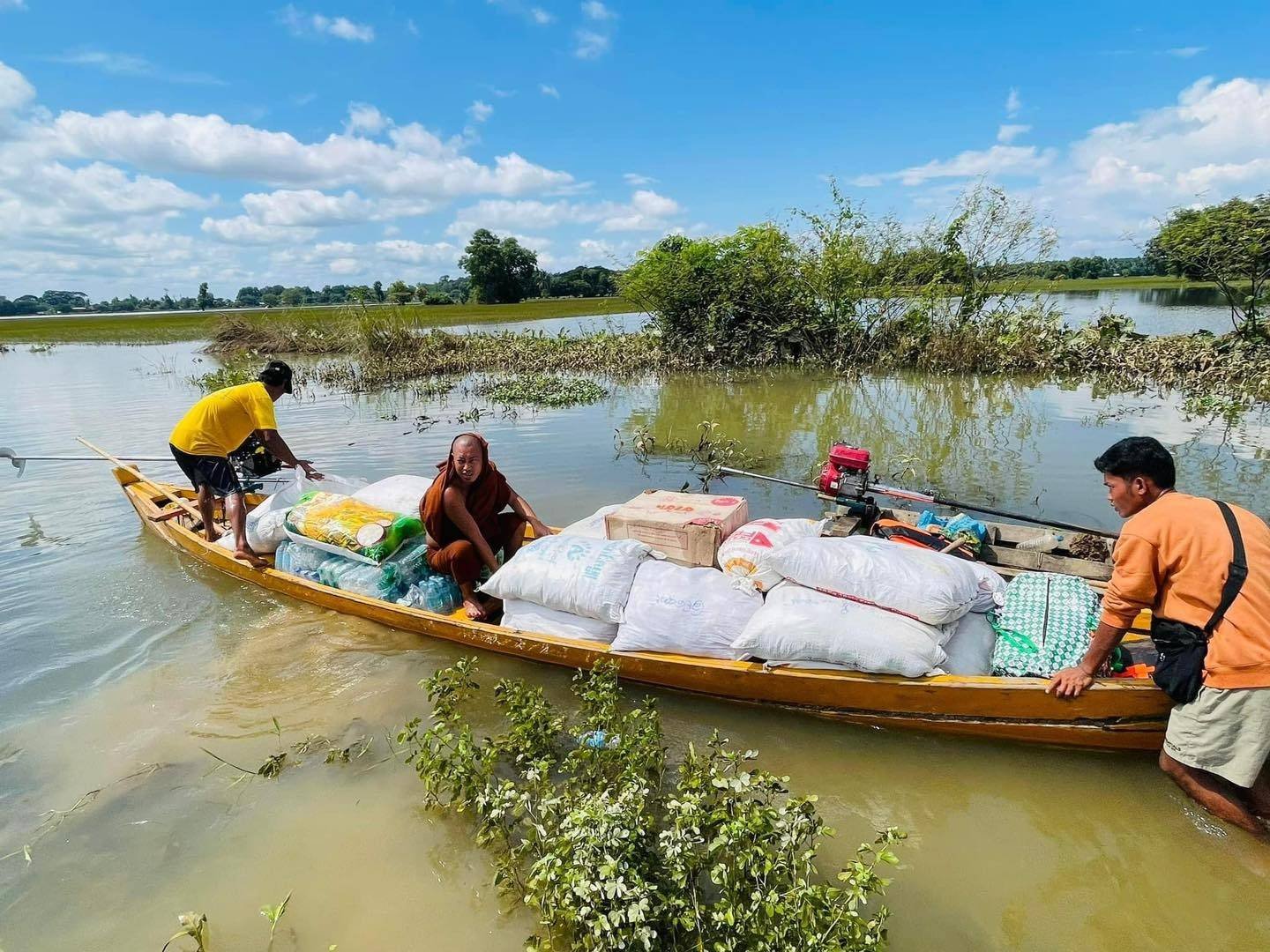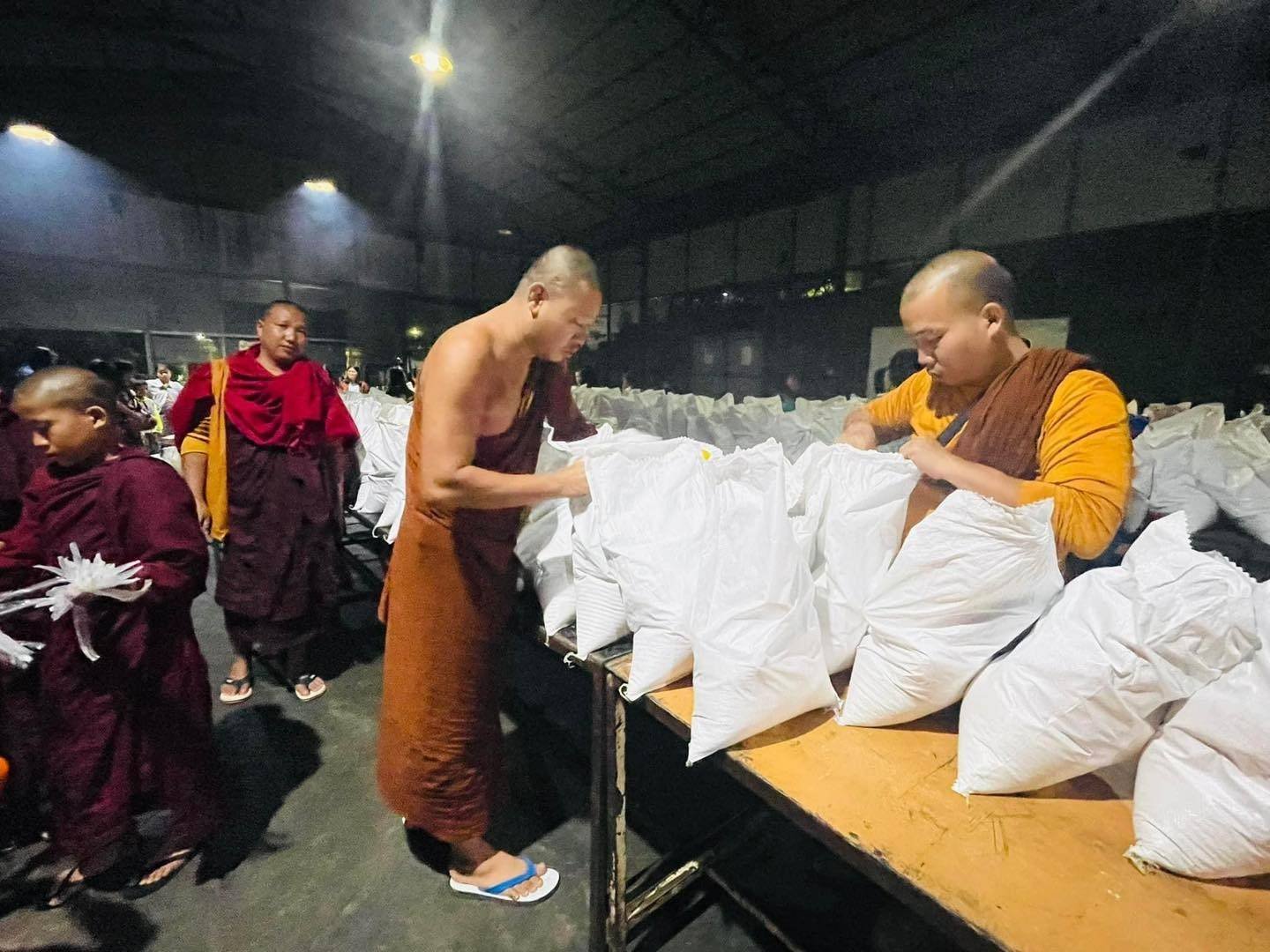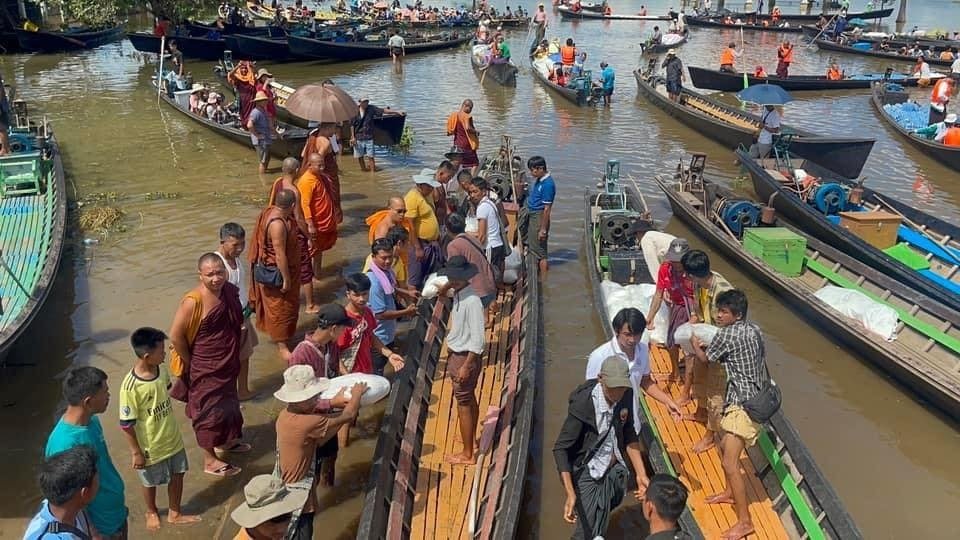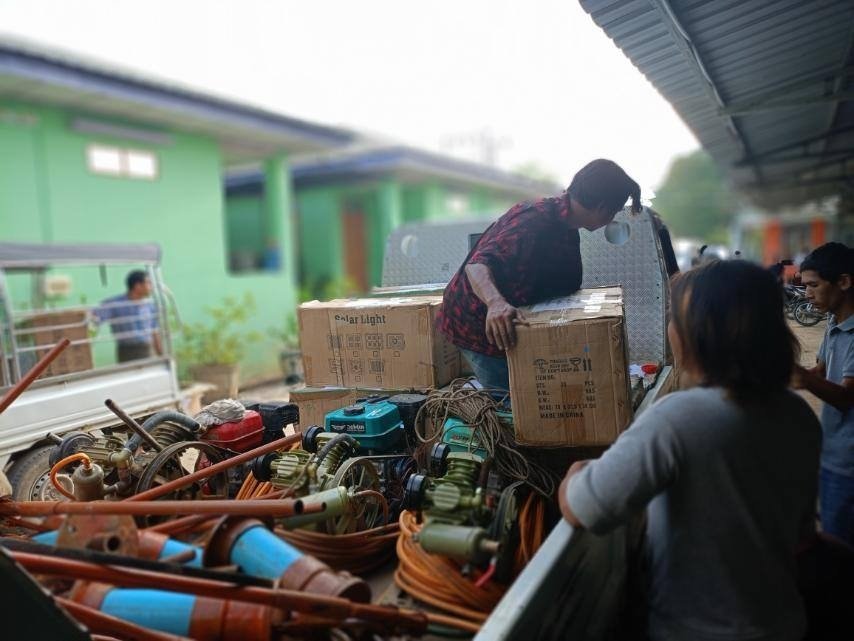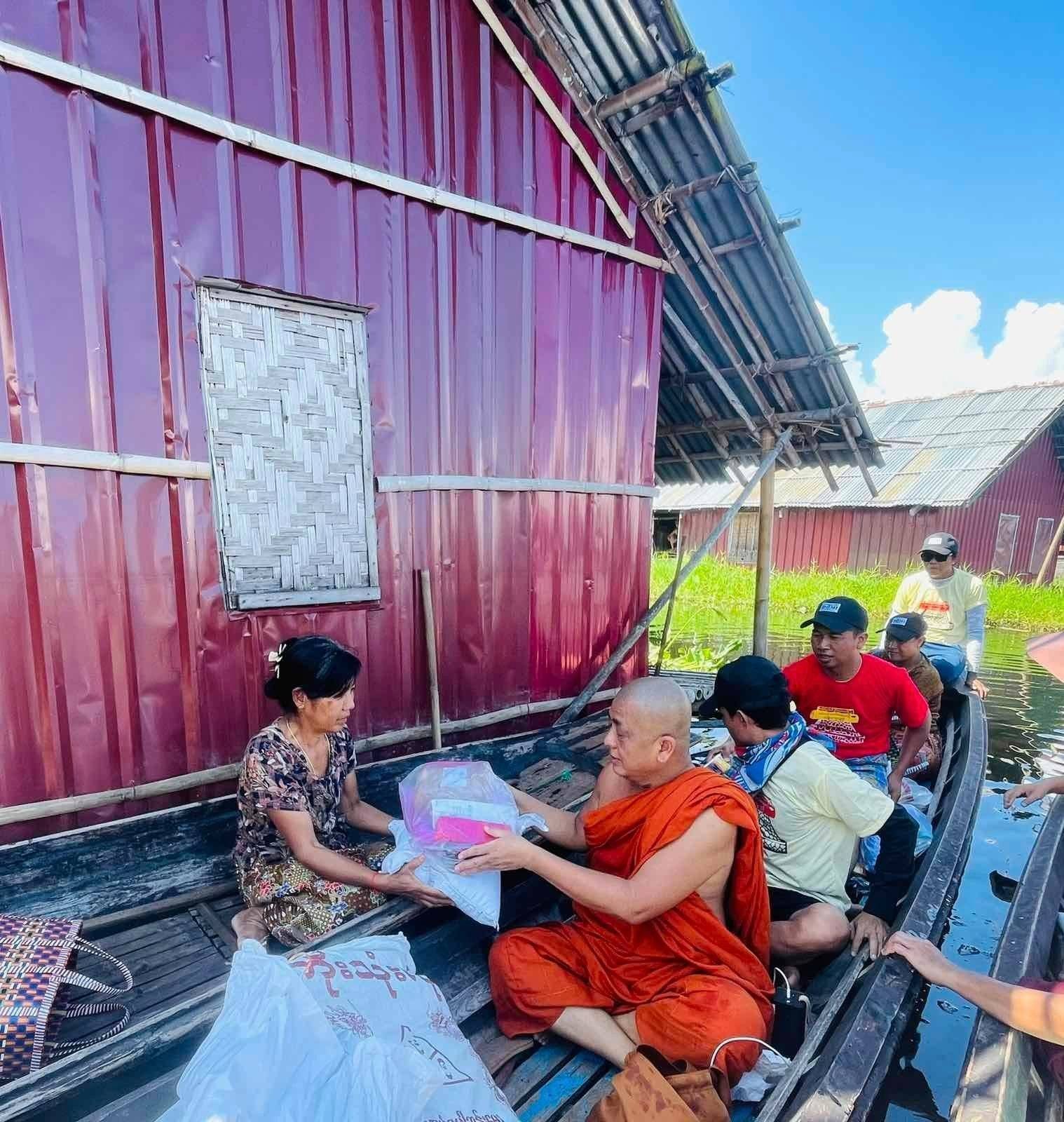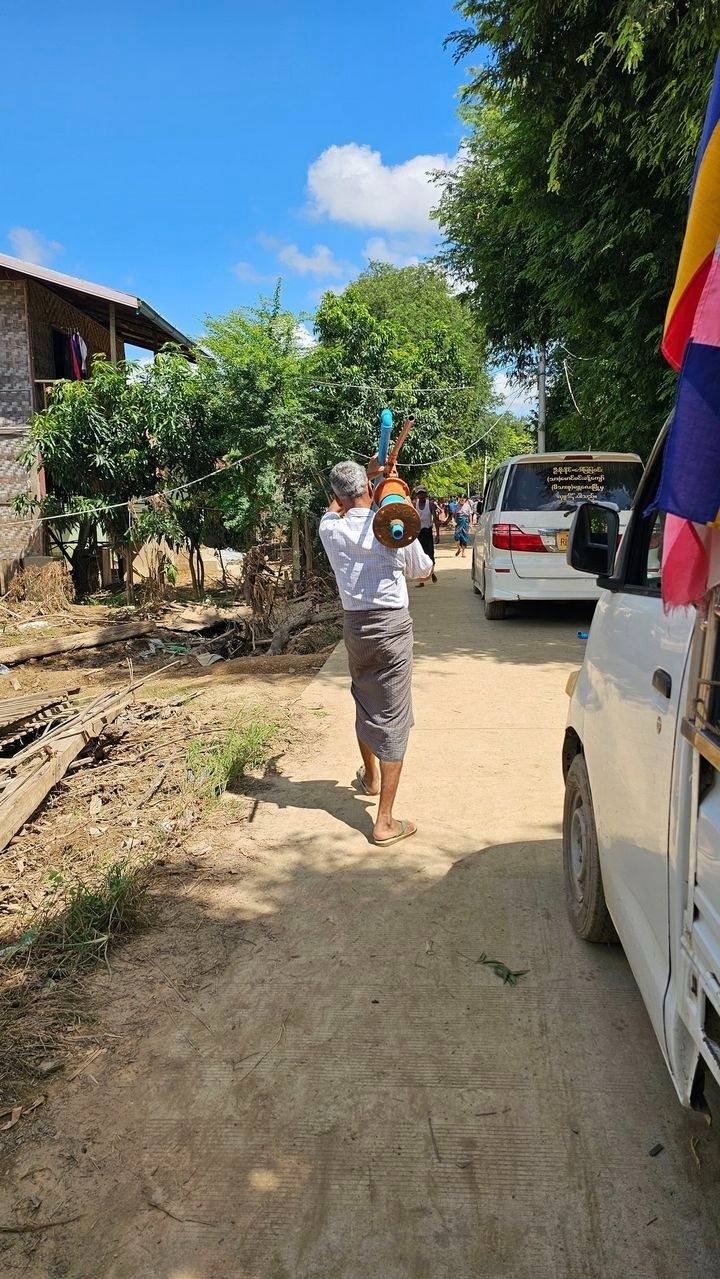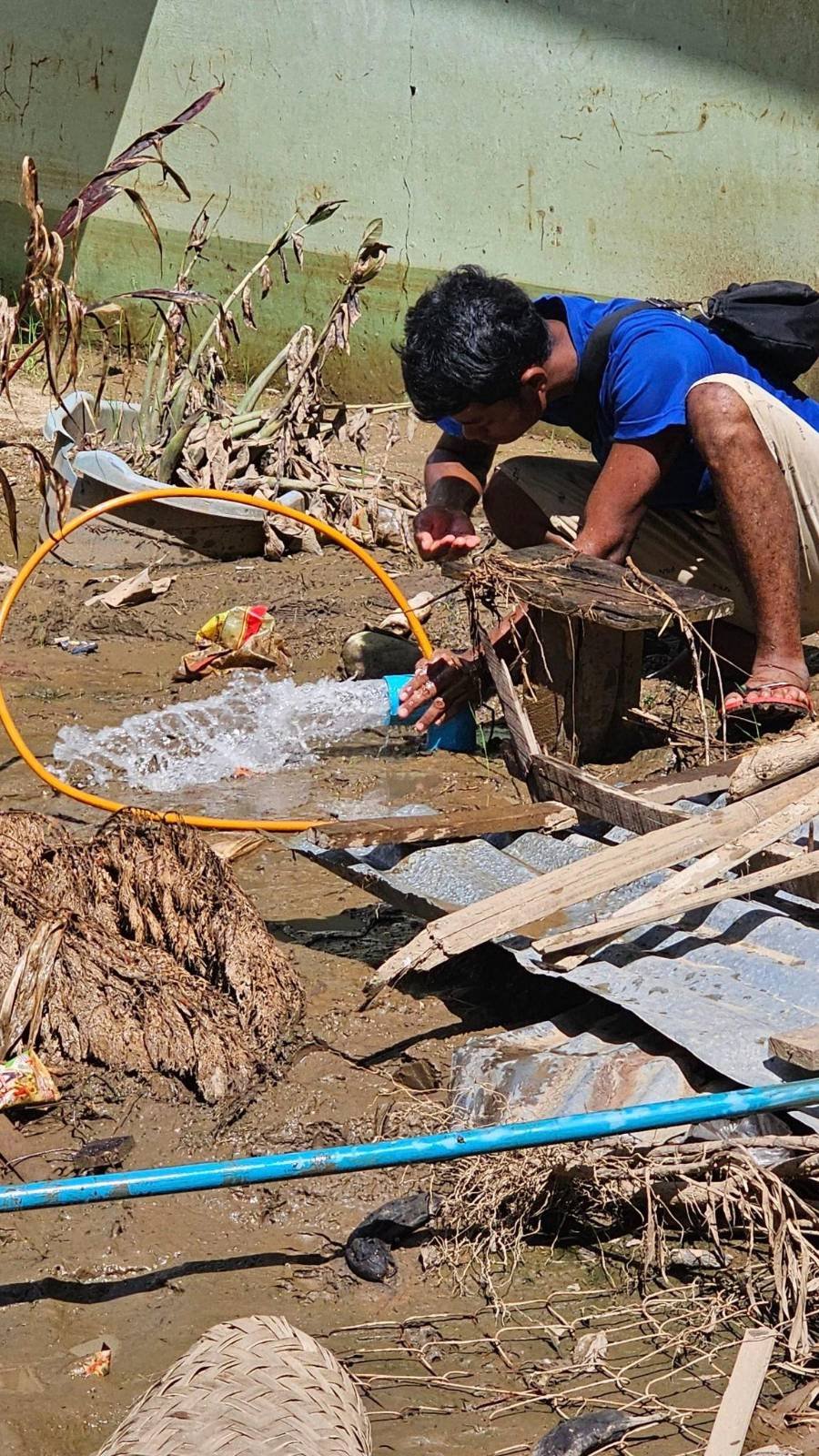Compassion Without Borders
We share the following essay submission from an author who has requested to remain anonymous due to safety concerns.
In the wake of recent natural disasters in Myanmar, a remarkable movement has emerged, led predominantly by well-known Buddhist monks who are spearheading disaster recovery efforts across the country. These monastic leaders have mobilized charities to rebuild homes and roads, restore water supplies, and provide essential relief to those affected by the catastrophic floods.
One such figure is Taung Pu La Sayadaw from Pyin Oo Lwin. His campaigns have focused on digging and restoring wells in 55 monasteries across Tatkon Township, ensuring access to clean water—a critical need in the aftermath of flooding. Similarly, the Yellow Generation Wave (YGW) Charity, led by monks who were at the forefront of the 2007 Saffron Revolution, has transitioned from immediate rescue operations to long-term recovery initiatives. These include relocating displaced individuals, rebuilding infrastructure, and providing mental health support to families who have lost loved ones, often incorporating religious rituals like merit transfer ceremonies to honor the deceased.
"Mental resilience," or psychological rehabilitation, has become a cornerstone of these recovery efforts. Leading monks are dedicating resources to alleviate the emotional and psychological stress experienced by bereaved families. For instance, Mizzima Gone Yi Sayadaw offered substantial financial support to two novice monks whose families suffered tragic losses—one lost his brother to the floods in Yedashe Township, Bago Region, and another's family lost their home and farmlands in Shwe Paw Kyun Village, Myit Thar Township, Mandalay Region. Notably, the revered Shwe Paw Kyun Sayadaw, known for his deep meditative practices and reputed psychic abilities, hails from the same village, adding a layer of spiritual solidarity to the support extended.
Our observations highlight the critical importance of sustaining monastic education for young novices, especially in times of crisis. In one case, a novice monk depended on his brother's earnings to support their parents, enabling him to continue his monastic studies. Similar situations have arisen at the Dhammaramsī Monastic Education Centre in Thein Gone Village, Yemethin Township—one of the areas hardest hit by flooding and landslides. High school students from distant hill villages attend school there, but the September 11 floods devastated their families, destroying homes and farmlands and, in some cases, taking lives. Pañña Lamin Sayadaw, who leads the center, is urgently seeking assistance to help these students continue their education, recognizing the high risk of dropout if their families can no longer support them. His charity extends beyond education; they are also aiding flood-stricken communities around Inle Lake in Southern Shan State under the motto: "People's suffering, our suffering. People's hardship, our hardship."
Another prominent monk, Shwe San Pin Sayadaw, is actively leading his charity association to support vulnerable flood victims in Kyaukse, Myitthar, Kume, Wundwin, and other townships. He has drawn attention to Myauk Kaing Village, severely affected by overflow from Kindar Dam and the Samone River. Despite its proximity to the Yangon-Mandalay Highway, the village has been overlooked by many donors. In a creative solution, Shwe San Pin Sayadaw has commissioned mosquito nets from tailors who are themselves internally displaced persons (IDPs) from conflict zones in Sagaing Region! This initiative supports both the IDPs and the flood victims. His charity is also reaching out to the floating villages of Inle Lake, where water levels are expected to remain high for at least another month barring further heavy rains.
Before the military coup, Shwe San Pin Sayadaw gained fame for his innovative fundraising methods in Pale Township. He organized campaigns where women donated their hair to fund the construction of bridges and schools in remote rural areas across Pale and Yinmarbin Townships in Sagaing Region. This approach empowered women of limited means to contribute significantly to their communities, earning him the affectionate nickname "Shwe San Pin Sayadaw (Golden Hair Monk)." He, too, studied at the Pali University in our team's leader's hometown, highlighting the interconnectedness of these compassionate efforts.
An encouraging aspect of these initiatives is the collaborative spirit transcending religious, ethnic, and gender boundaries. In Kyaukse and Myitnge townships, Buddhist monks and charities have extended aid to predominantly Islamic villages. Around Inle Lake in Southern Shan State, they are assisting flood victims from various ethnic groups without discrimination.
In conclusion, our analysis of the recent flood disaster in Myanmar reveals several key developments:
1. Disaster Response Phase: Hundreds of monasteries have transformed into flood relief camps. Compassionate monks and nuns are hosting and feeding vulnerable victims, providing immediate shelter and sustenance. For example:
- Sat Yon Pariyatti Monastery in Swar Township, Mandalay Region, initially sheltered 700 people.
- Kyaukse Mahar Gandharum Monastery in Kyaukse Township, Mandalay Region, continues to offer refuge to displaced families.
2. Disaster Recovery Phase: Monastic communities are now leading long-term recovery campaigns, which include:
- Relocation of victims: Assisting families in finding new homes and rebuilding their lives.
- Infrastructure rebuilding: Repairing and reconstructing homes, roads, and essential facilities.
- Healthcare and rehabilitation: Providing medical services and supporting physical recovery.
- Psychosocial rehabilitation: Offering mental health support to help victims cope with trauma.
- Notable contributors in this phase include:
- Taung Pu La Sayadaw
- Yellow Generation Wave (YGW) Monks’ Charity
- Dhammaramsī Monastic Education Center led by Pañña Lamin Sayadaw
- Shwe San Pin Sayadaw
These compassionate efforts underscore the pivotal role of monastic leaders in Myanmar's disaster response and recovery. Their actions not only provide immediate relief but also foster unity and resilience across diverse communities. By bridging gaps and promoting inclusivity, these monks are healing not just the physical wounds inflicted by natural calamities but also the societal rifts that have long existed. Their work exemplifies a profound commitment to humanitarian principles, offering hope and solidarity in times of unprecedented hardship.
